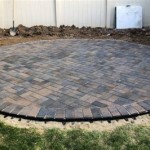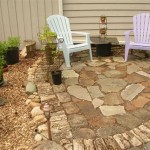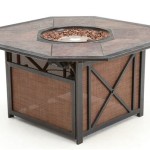Essential Aspects of Patio Vegetable Garden Containers
Growing vegetables in containers on a patio offers a convenient and space-saving solution for urban gardeners and individuals with limited outdoor space. However, choosing and maintaining the right containers is crucial for the success of your patio vegetable garden.
Container Selection
The size and material of your containers will impact the growth of your plants. Consider the following factors when selecting containers:
- Size: Choose containers that are large enough to accommodate the root systems of your plants. Vegetables like tomatoes and peppers require larger containers, while herbs and leafy greens can thrive in smaller pots.
- Material: Containers can be made from various materials, including plastic, clay, and fabric. Plastic containers are lightweight and durable, while clay pots provide good drainage and insulation. Fabric pots offer excellent drainage and air circulation.
- Drainage: Proper drainage is essential to prevent waterlogging and root rot. Ensure your containers have drainage holes in the bottom.
- Aesthetics: Consider the appearance of your containers to complement your patio décor.
Soil and Planting
Filling your containers with the right soil and planting your vegetables correctly is crucial for healthy growth:
- Soil: Use a high-quality potting mix specifically formulated for container gardening. Avoid using garden soil, as it can be heavy and compact.
- Planting Depth: Plant your seedlings or transplants at the same depth as they were in their original containers.
- Spacing: Space your plants according to the recommended spacing guidelines for each vegetable type.
- Watering: Water your plants regularly, especially during hot and dry weather. Allow the soil to dry out slightly between waterings.
Fertilizing and Mulching
Fertilizing and mulching your patio vegetable garden containers will ensure optimal plant growth and productivity:
- Fertilizing: Fertilize your plants every few weeks with a balanced liquid fertilizer. Follow the manufacturer's instructions for application rates.
- Mulching: Spread a layer of mulch, such as straw or compost, around the base of your plants. This helps retain moisture, control weeds, and regulate soil temperature.
Other Considerations
- Light: Most vegetables require at least six hours of sunlight per day. Position your containers in a sunny location.
- Support: Stake or cage tall plants, such as tomatoes and peppers, to provide support as they grow.
- Pest Control: Regularly inspect your plants for pests and diseases. Use organic or chemical pest control methods as necessary.
By following these essential aspects of patio vegetable garden containers, you can create a thriving and productive garden in your limited outdoor space.

Dammann S Garden Company Save Space With Container Vegetable Gardening

Patio Vegetable Garden Setup And Tips To Get Growing

35 Creative Container Vegetable Garden Ideas A Piece Of Rainbow
Container Gardening With Vegetables Gasper Landscape Design Construction

Patio Vegetable Garden Setup And Tips To Get Growing

15 Best Vegetables For Container Gardens

Grow A Container Vegetable Garden On Your Patio Tips The Foodie Gardener

How To Create A Patio Vegetable Garden With Planters Pots

Create A Patio Vegetable Garden Gardener S Supply

Container Vegetable Gardening For Beginners Attainable Sustainable








